8 Best Places to Visit in Paro In 2024
Ready to delve into this magical destination? Many Bhutan tour packages offer some of the most fascinating places to visit in Paro, both the well-known and those off the usual tourist track.
Hidden away in the scenic valleys of Bhutan is the tranquil town of Paro, a place rich in culture, history, and scenic beauty. Famous for its historic temples, breathtaking scenery, and vibrant local way of life, Paro provides visitors with an unmatched experience.
Paro: A Gateway to Bhutanese Culture
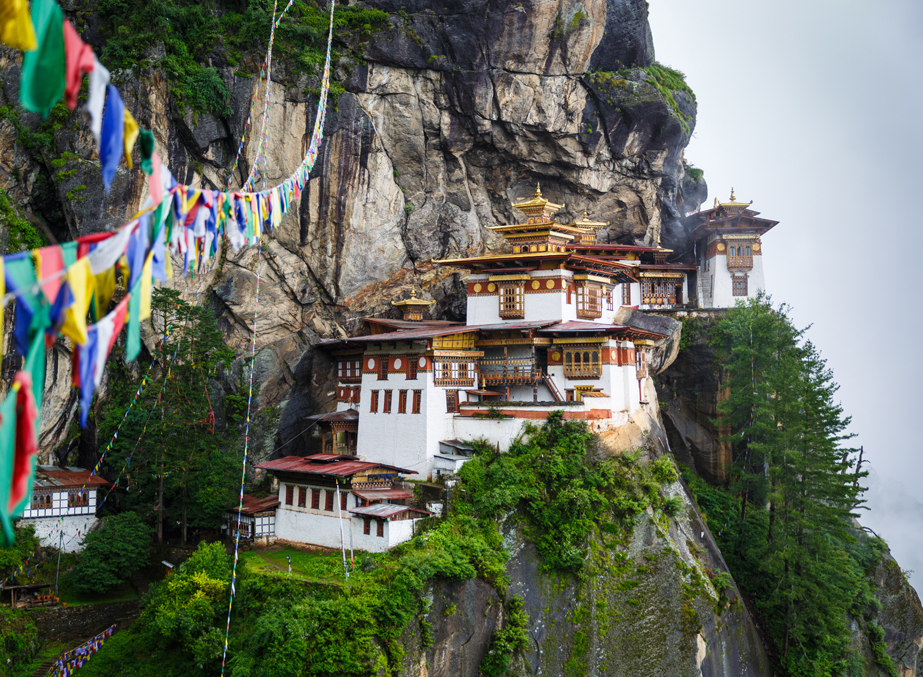
Paro is often the first stop for travelers entering Bhutan, thanks to its convenient location near the country’s only international airport.
But beyond its logistical advantages, Paro serves as a gateway to Bhutanese culture, offering visitors a glimpse into the country’s unique traditions and way of life, and is one of the most visited hill stations in Bhutan.
One of the most iconic landmarks in Paro is the magnificent Paro Taktsang, or Tiger’s Nest Monastery, perched precariously on a cliffside overlooking the valley below.
Legend has it that Guru Rinpoche, the founder of Tibetan Buddhism, meditated here in the 8th century after arriving on the back of a tigress. Today, the monastery is a sacred site and a testament to the spiritual heritage of Bhutan.
Another one of the most essential places to visit in Paro is the Rinpung Dzong, a fortress monastery that dates back to the 17th century.
With its towering walls and intricate architecture, the dzong is a stunning example of Bhutanese craftsmanship and is an important religious and administrative center in the region.
Paro Taktsang (Tiger’s Nest)
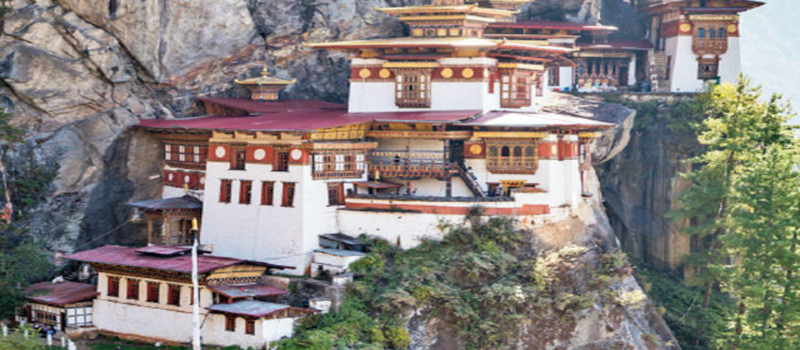
Located on the edge of a cliff, Paro Taktsang, or the Tiger’s Nest, is not only an architectural marvel but also a significant pilgrimage site for Buddhists making it one of the most important places to visit in Paro.
This sacred monastery, hanging dangerously 3,000 feet above the Paro valley floor, is believed to have been blessed by the legendary Guru Rinpoche, who meditated here in the 8th century.
Visiting Paro Taktsang is not just about admiring its beauty from afar but also about experiencing its spiritual aura among the many monasteries in Bhutan.
Legend has it that Guru Rinpoche, also known as Padmasambhava, flew to this location on the back of a tigress, hence the name “Tiger’s Nest,” and meditated in a cave here for three years, three months, three weeks, and three days.
Guru Rinpoche is credited with introducing Buddhism to Bhutan and is considered the country’s patron saint. His presence at Paro Taktsang provides profound spiritual meaning to the location.
Things to Do at the Tiger’s Nest
- Hiking: The most common way to reach Paro Taktsang is by embarking on a scenic hike that takes around 2-3 hours each way.
- The trail winds through pine forests, across streams, and up steep slopes, offering breathtaking views along the way.
- Exploring the Monastery: Upon reaching the monastery, visitors can explore its various temples, halls, and courtyards, each adorned with intricate murals, statues, and religious relics.
- Don’t miss the sacred cave where Guru Rinpoche is said to have meditated.
- Offering Prayers: Visitors can participate in the spiritual rituals performed by monks and pilgrims, including lighting butter lamps, spinning prayer wheels, and offering prayers and prostrations.
- Taking in the Views: The panoramic views from Paro Taktsang are simply mesmerizing, with the Paro valley stretching out below and the snow-capped Himalayan peaks towering in the distance.
- Be sure to take plenty of time to soak in the beautiful scenery.
Rinpung Dzong
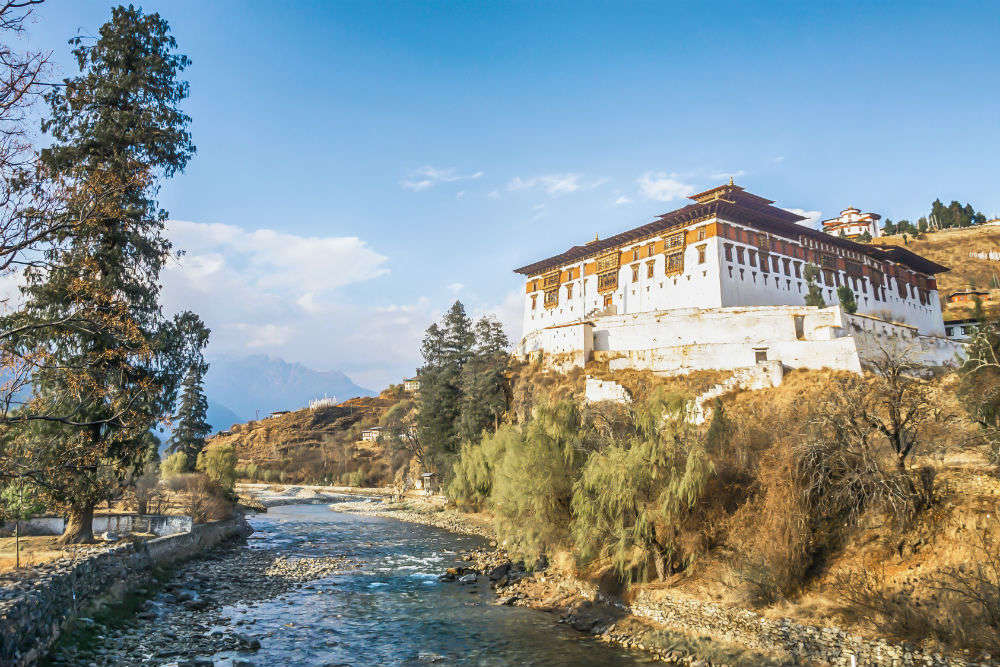
Rinpung Dzong, also known as Paro Dzong, is a captivating fortress monastery located in the heart of Paro Valley, Bhutan.
Built during the 17th century by the visionary leader Zhabdrung Ngawang Namgyal, this impressive building is evidence of Bhutan’s exceptional architectural skills and rich cultural legacy.
The dzong’s architecture is a reflection of the traditional Bhutanese style, which is defined by imposing stone walls, finely carved wooden balconies, and tall, whitewashed structures with elaborate detailing and vibrant paintings.
Rinpung Dzong, perched majestically on a hill overlooking the Paro Valley, draws attention with its imposing presence and vast scenery of the surroundings.
Rinpung Dzong was first built as a stronghold against Tibetan invasions. Later, it became an important center of worship and government, with temples, monk quarters, administrative offices, and storage areas.
Currently, it still functions as the Paro district’s administrative hub and is still an active place of worship with a community of Buddhist monks.
Things to Do at the Rinpung Dzong
Attend Religious Ceremonies: Rinpung Dzong remains an active religious center, with monks residing within its walls and conducting daily prayers and rituals.
Visitors have the opportunity to witness these ceremonies, which often include chanting, drumming, and the offering of butter lamps, providing a glimpse into Bhutan’s rich spiritual heritage.
Visit the Ta Dzong: Connected to Rinpung Dzong via a traditional wooden bridge is the Ta Dzong, a former watchtower that now houses the National Museum of Bhutan
Explore the museum’s diverse collection of artifacts, artworks, and exhibits, which offer insights into the history, culture, and traditions of Bhutan.
Enjoy the Views: From various vantage points within Rinpung Dzong, visitors can enjoy sweeping views of the Paro Valley, with its terraced fields, meandering river, and distant mountains.
Be sure to bring your camera to capture the stunning views and serene ambiance of this hilltop fortress.
Participate in Festivals: Rinpung Dzong plays host to several annual festivals and events, including the famous Paro Tsechu.
During these celebrations, masked dances, traditional music performances, and religious ceremonies take place, attracting locals and visitors alike to witness the vibrant festivals of Bhutan.
Kyichu Lhakhang
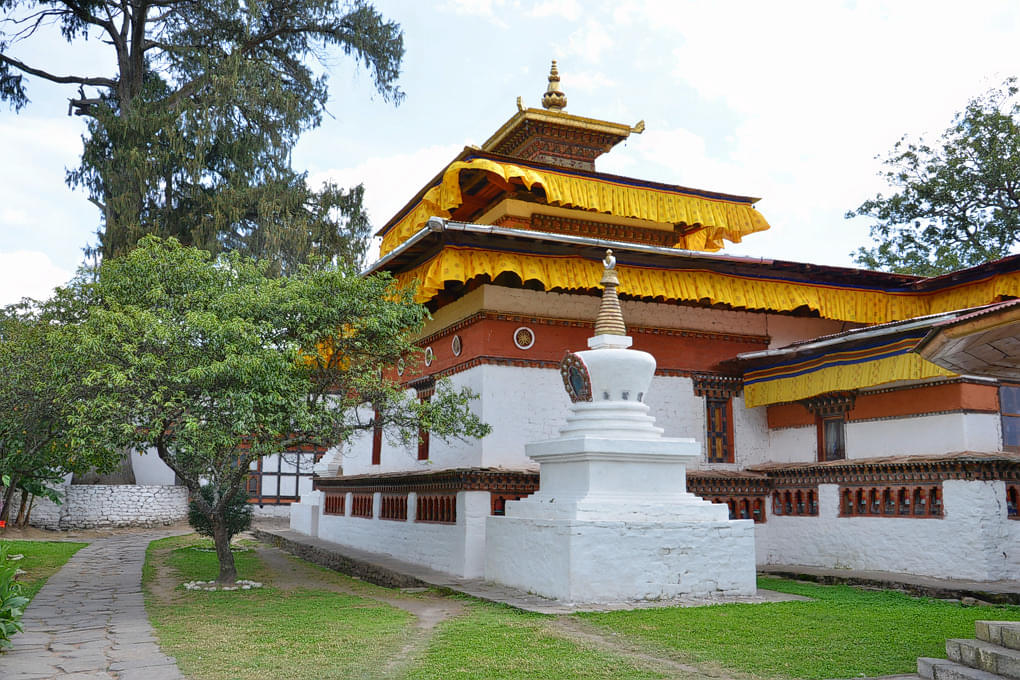
With a history stretching back to the 7th century, Kyichu Lhakhang is one of the most revered and ancient temples in Bhutan.
This modest but deeply spiritual location, which is only a short drive from Paro Town, radiates peace and respect and draws pilgrims and travelers from all over the world.
The whitewashed walls of the temple welcome guests as they arrive, with vibrant prayer flags swaying in the breeze and the sound of chanting and whispered prayers filling the air.
The sacred relic housed within Kyichu Lhakhang is one of its most valued characteristics. It is thought to have been dedicated in the 7th century by Songtsen Gampo, the Tibetan king.
Pilgrims travel from all across Bhutan to honor this relic in the hopes of receiving blessings and comfort on a spiritual level.
Things to Do at the Kyichu Lhakhang
Offering Prayers: As with many Bhutanese temples, Kyichu Lhakhang provides a serene environment for spiritual reflection and prayer.
Visitors can join locals in performing traditional rituals, such as lighting butter lamps, offering incense, and circumambulating the temple while chanting mantras.
Exploring the Temple Complex: Despite its relatively small size, Kyichu Lhakhang boasts a rich architectural and artistic heritage.
Take the time to explore its various prayer halls, chapels, and courtyards, each adorned with intricate wood carvings, colorful paintings, and sacred relics.
Seeking Blessings: Many visitors come to Kyichu Lhakhang seeking blessings for themselves and their loved ones.
The resident lamas are often available to bestow blessings and offer guidance, providing a deeply meaningful experience for those on a spiritual journey.
Walking around the temple complex in a clockwise manner is a common activity known as circumambulation at Kyichu Lhakhang.
This ritual is believed to accumulate merit and purify negative karma, offering participants a sense of peace and spiritual renewal.
Visiting the Sacred Cypress Tree: A sacred cypress tree near the temple is claimed to have been planted in the seventh century by Songtsen Gampo, the monarch of Tibet.
According to legend, the tree miraculously emerged from a seed that was transported from Tibet and is still growing now, signifying the ongoing existence of Buddhism in Bhutan.
Drukgyel Dzong
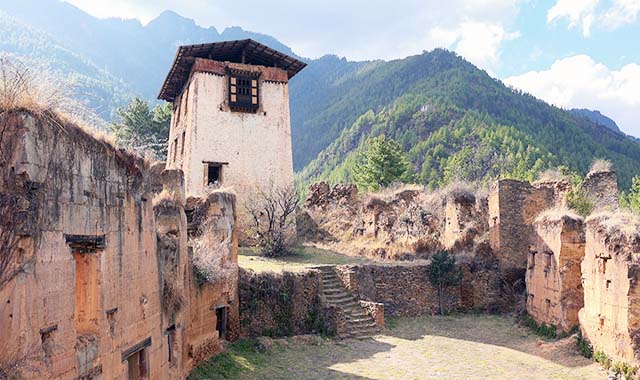
Situated on the outskirts of Paro town, Bhutan, the Drukgyel Dzong is a historically significant stronghold with great cultural and symbolic value.
Constructed in the 17th century by Bhutan’s founder, Zhabdrung Ngawang Namgyal, this massive building functioned for decades as both an administrative and military hub.
Drukgyel Dzong, which means “Fortress of the Victorious Druk,” is a reference to the Druk, or Thunder Dragon, which is Bhutan’s national symbol.
Drukgyel Dzong, a monument to the bravery of the Bhutanese people and their rich history, is a must-see on any list of places to visit in Paro.
The dzong was an anchor against any threats and offered views of the Paro Valley from its elevated position.
For the people of Bhutan, Drukgyel Dzong is significant not only militarily but also culturally and religiously.
It is thought to be the location of the significant victory over Tibetan forces that occurred there in the 17th century—a significant occasion in Bhutanese history that guaranteed the nation’s independence and sovereignty.
Things to Do at the Drukgyel Dzong
Explore the Ruins: Wander through the crumbling walls and courtyards of Drukgyel Dzong, imagining the fortress as it once stood in its full glory.
Photography: Capture the striking scenery of the ancient ruins against the backdrop of the Paro Valley and the surrounding Himalayan mountains at one of the best photography points in Bhutan.
Enjoy the Scenic Views: Take in the panoramic views of the Paro Valley and the snow-capped peaks of the Himalayas from the vantage point of Drukgyel Dzong.
Picnic and Relax: Bring a picnic lunch and find a peaceful spot amidst the ruins to enjoy a leisurely meal surrounded by history and natural beauty.
Learn About Bhutanese History: Read up on the history of Drukgyel Dzong and its significance in Bhutanese history and culture.
Visit Nearby Attractions: Explore other nearby attractions, such as the National Museum of Bhutan or the Rinpung Dzong, to further enrich your understanding of Bhutanese culture and heritage.
The National Museum of Bhutan
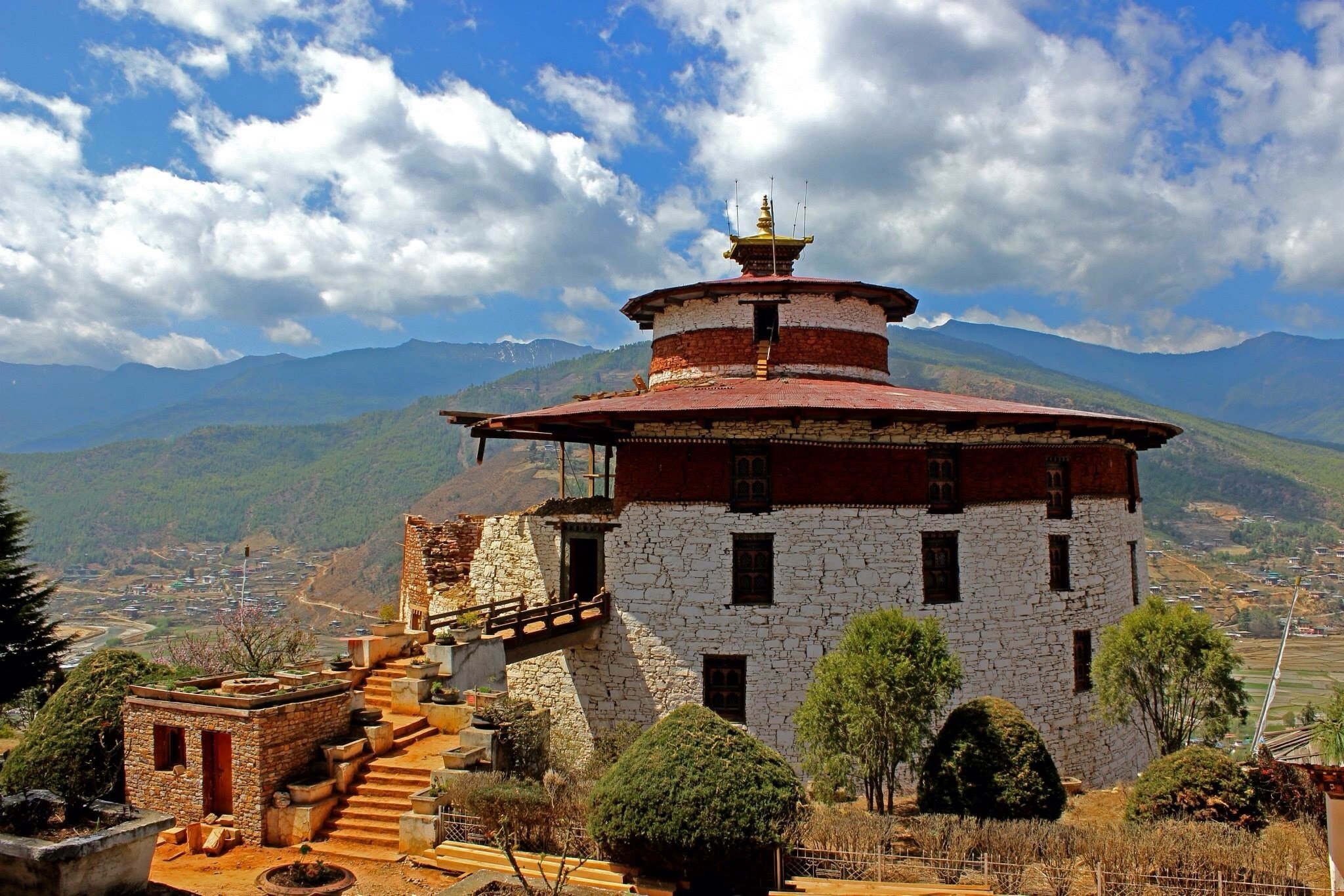
For history buffs, the National Museum of Bhutan, housed within the historic Ta Dzong, is a must-visit on your list of places to visit in Paro. It serves as a captivating gateway to the kingdom’s cultural and historical legacy.
Ta Dzong, which was originally constructed as a watchtower to protect the neighboring Rinpung Dzong, was converted into a museum in the 1960s, making it an appropriate location for the celebration and preservation of Bhutanese heritage.
Perched atop a hill overlooking the Paro Valley, the Ta Dzong itself is a striking architectural marvel, with its cylindrical structure and traditional Bhutanese design.
A vast collection of artifacts, artworks, and displays covering every aspect of Bhutan’s history and culture greet tourists as they enter the museum.
One of the highlights of the National Museum is its collection of religious artifacts and relics, including ancient thangka paintings, intricately crafted statues, and ritual objects used in Buddhist ceremonies.
Things to Do at the National Museum
Explore the Exhibits: Wander through the museum’s various galleries, each dedicated to different aspects of Bhutanese culture, history, and natural heritage.
Learn About Bhutanese Religion: Discover the spiritual practices and beliefs that have shaped Bhutanese society for centuries.
Admire the Artwork: Bhutan is renowned for its exquisite traditional arts and crafts, including thangka paintings, wood carvings, and intricate textiles.
Experience Cultural Diversity: Bhutan is home to a rich tapestry of ethnicities, languages, and customs. Explore exhibits that celebrate the cultural diversity of Bhutan’s people, from the vibrant festivals and traditional attire
Attend Special Events: Keep an eye out for special events and exhibitions hosted by the National Museum of Bhutan.
Visit the Museum Shop: Before you leave, don’t forget to stop by the museum shop, where you can purchase souvenirs, handicrafts, and books on Bhutanese culture and history.
Chele La Pass
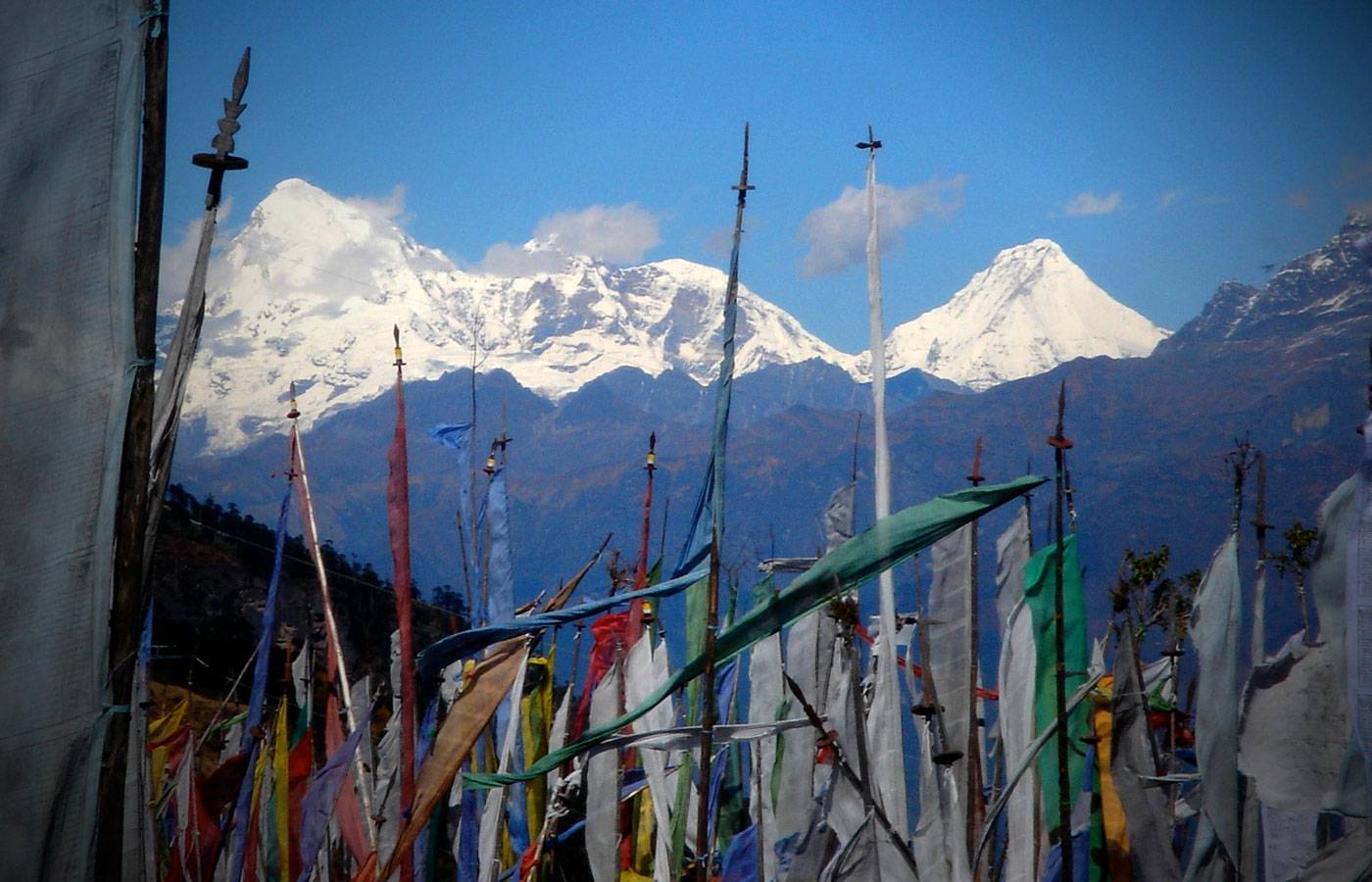
Nestled amidst the towering peaks of the Himalayas, Chele La Pass stands as a majestic gateway to Bhutan’s alpine heart and should be a must-visit on your list of places to visit in Paro.
This high mountain pass, which sits at an elevation of more than 12,795 feet, provides tourists with a view of unmatched natural beauty, tranquility, and breathtaking views that stretch forever.
The journey to Chele La Pass is an adventure in itself, as travelers traverse winding mountain roads that snake through forests and lush valleys. Each turn reveals a fresh view of snow-capped peaks, flowing waterfalls, and lush valleys covered in wildflowers
Chele La Pass is a system of hiking routes that flow through rhododendron forests and mountain fields, perfect for nature lovers, and is a perfect place for hiking in Bhutan.
Things to Do at the Chele La Pass
Scenic Drive: Travelling up steep mountain roads between lush vegetation and snowy fields the drive to Chele La Pass is an adventure in and of itself.
Photography: Don’t forget to pack a camera to record the breathtaking views from Chele La Pass. The expansive Himalayan views offer countless chances for breathtaking photos.
Hiking: Pull on your hiking boots and explore the several hiking routes that loop around Chele La Pass’s mountain slopes.
Birdwatching: With a wide variety of bird species living in the mountain meadows and woodlands, Chele La Pass is a birdwatcher’s dream.
Cultural Immersion: Take the time to interact with the local nomadic herders who graze their yaks and horses in the high-altitude pastures around Chele La Pass.
Stargazing: As night falls over Chele La Pass, the clear mountain skies provide a perfect canvas for stargazing.
Away from the light pollution of urban areas, the night sky comes alive with a dazzling display of stars, planets, and constellations, offering a mesmerizing glimpse into the cosmos.
Dzongdrakha Goemba
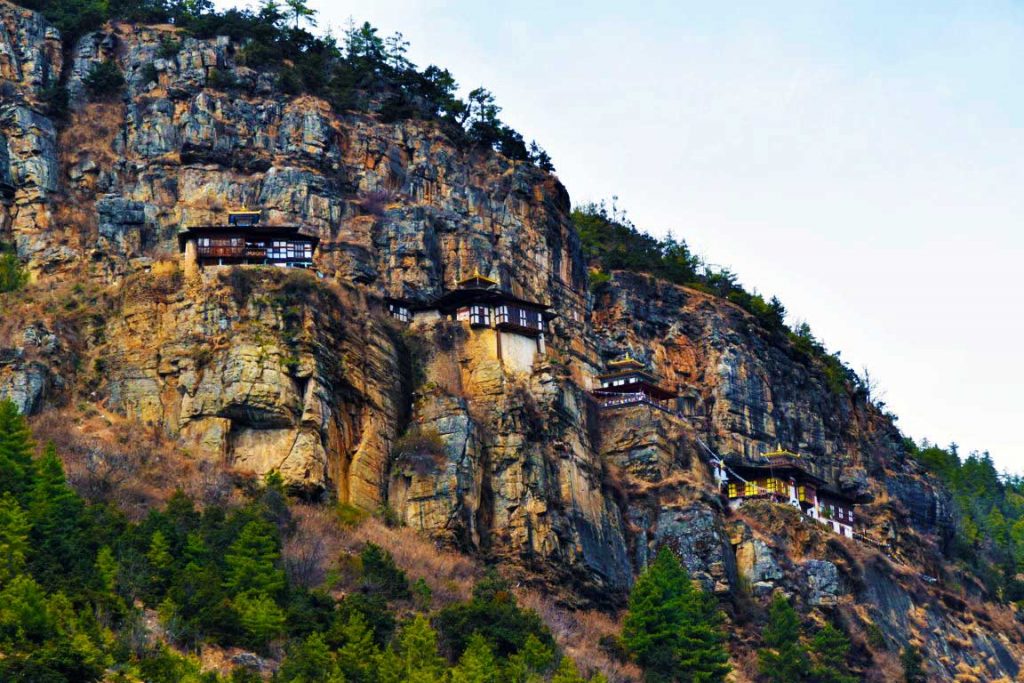
Situated atop a cliff overlooking the Paro Valley, Dzongdrakha Goemba is a group of four ancient temples that radiate an aura of mystique and serenity.
Dating back to the 16th century, these sacred sites are respected by locals and pilgrims alike for their religious significance and breathtaking natural setting.
Dzongdrakha Goemba, situated amidst the serene beauty of Paro Valley in Bhutan, is captivating evidence of the kingdom’s fascinating spiritual heritage.
This renowned monastery, situated on a cliff, provides guests with a rare opportunity to explore Bhutan’s religious customs and fully embrace the serene beauty of the surrounding environment.
Steeped in spiritual history, Dzongdrakha Goemba is a must-visit on your list of places to visit in Paro. Dzongdrakha Goemba offers breathtaking views of the Paro Valley below from its elevated position.
The monastery’s high location gives tourists a unique view of the surrounding countryside in addition to a sense of peace and escape from daily life.
A sense of awe and expectation surrounds the visitors as they approach the stone steps that lead to the monastery, knowing that they are about to set off on a journey of spiritual discovery and cultural immersion.
Things to Do at the Dzongdrakha Goemba
Prayer and meditation: Spend some time at the holy altars offering prayers and offerings, or just sit quietly and let the peace of the place wash over you.
Hiking & Nature Exploration: Look for natural plants and animals as you stroll along the picturesque routes, such as rare orchids, huge rhododendron trees, and rare Himalayan wildlife.
Photography & Seizing Moments: With its spectacular cliffside location and breathtaking views of the Paro Valley below, Dzongdrakha Goemba is a photographer’s dream come true.
Cultural Immersion and Learning: Engage with the monks and nuns who live at Dzongdrakha Goemba to gain insight into their everyday lives, spiritual practices, and the role that the monastery plays in Bhutanese culture.Picnicking and Relaxation: After exploring the monastery and surrounding area, find a peaceful spot to enjoy a picnic amidst the natural beauty of Paro Valley.
Paro Weekend Market:
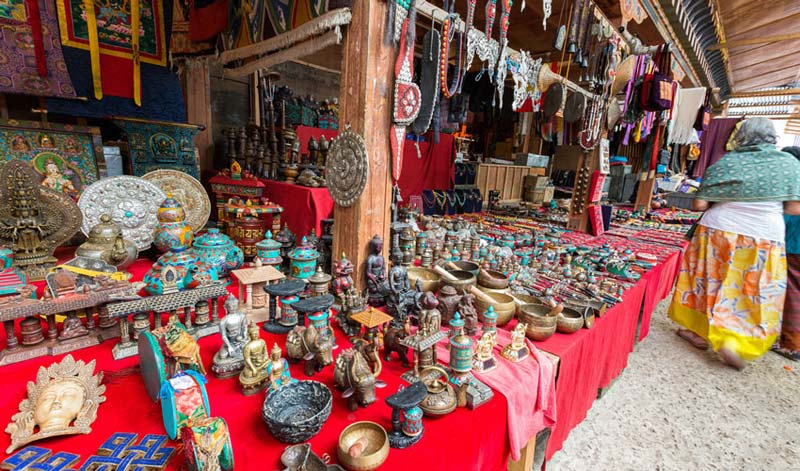
For a dose of local life, the Paro Weekend Market is a must-visit on your list of places to visit in Paro. Tucked away in the center of Paro town, this vibrant market, which takes place every weekend, is an exciting center of activity that provides visitors with a window into Bhutanese culture and traditions.
Farmers, artisans, and sellers from all over the area come together, resulting in a vibrant tapestry of sights, sounds, and scents that will captivate your senses.
Exploring Local Delicacies:
One of the highlights of the Paro Weekend Market is the opportunity to sample a wide array of Bhutanese delicacies and traditional dishes.
From hearty staples like ema datshi (chili and cheese stew) and momo (dumplings) to sweet treats like khapse (deep-fried pastries), the market offers a tantalizing array of flavors to tempt your taste buds.
Shopping for Handicrafts and Souvenirs:
Browse through stalls adorned with intricately woven textiles, hand-carved wooden figurines, and vibrant thangka paintings, each offering a unique glimpse into Bhutan’s rich artistic heritage.
Enjoying Cultural Performances:
Throughout the day, the Paro Weekend Market comes alive with the vibrant sounds of Bhutanese music and dance. Join in the festivities by clapping along to the beat or even trying your hand (or feet) at a traditional Bhutanese dance!
How and When to Visit Paro Valley
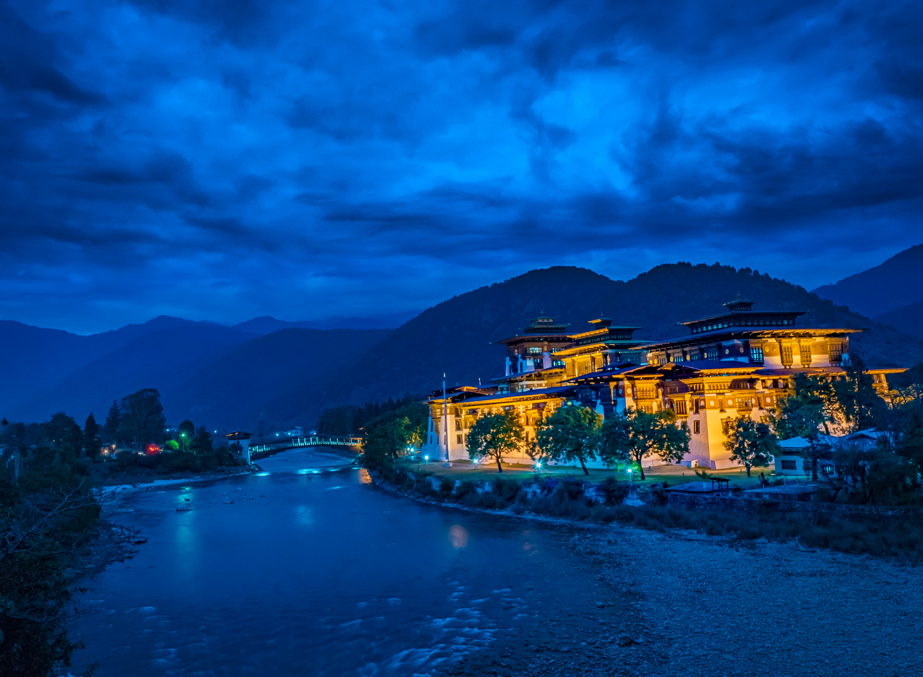
Spring (March to May) is one of the best times to visit Paro Valley according to the Paro travel guide when the weather is pleasant, and the landscape comes alive with blooming flowers. Temperatures are mild, making it ideal for outdoor activities and hiking.
Autumn (September to November): Another popular time to visit, autumn brings clear skies, comfortable temperatures, and stunning views of the Himalayas.
By Air: The easiest way to reach Paro Valley is by flying into Paro International Airport, which serves as Bhutan’s only international airport. By Road: If you’re already in Bhutan, you can travel to Paro Valley by road from other major towns and cities. Paro is well-connected by road to Thimphu, the capital city, as well as other popular destinations like Punakha and Haa Valley.
Accommodation Options:
Paro Valley offers a range of accommodation options to suit different preferences and budgets. From luxury resorts and boutique hotels to cozy guesthouses and homestays in Bhutan, you’ll find plenty of choices for your stay.
From exploring iconic places like Tiger’s Nest Monastery to venturing off the beaten path to discover hidden gems like Dzongdrakha Goemba there are a lot of places to visit in Paro.
Whether exploring ancient temples, trekking through pristine landscapes or immersing oneself in local culture, a visit to Paro is sure to leave a lasting impression on the hearts and minds of all who venture here.
What are the must-visit attractions in Paro?
Some must-visit attractions in Paro include Tiger’s Nest Monastery, Rinpung Dzong, National Museum of Bhutan, Chele La Pass, etc
How can I reach the Paro Taktsang (Tiger’s Nest) Monastery?
You can reach Paro Taktsang (Tiger’s Nest) Monastery by hiking or horse riding from the base point, approximately 2-3 hours each way.
What cultural experiences can I enjoy in Paro?
In Paro, you can enjoy cultural experiences like attending traditional festivals (Tshechus), visiting local temples and monasteries, and exploring Bhutanese architecture in Paro town.
Are there any off-the-beaten-path destinations worth exploring in Paro?
Yes, in Paro, you can explore off-the-beaten-path destinations like Dzongdrakha Goemba, a cliffside monastery, and Jangtsa Dumtseg Lhakhang, a unique temple with intricate artwork. Additionally, you can venture to remote villages like Dop Shari





